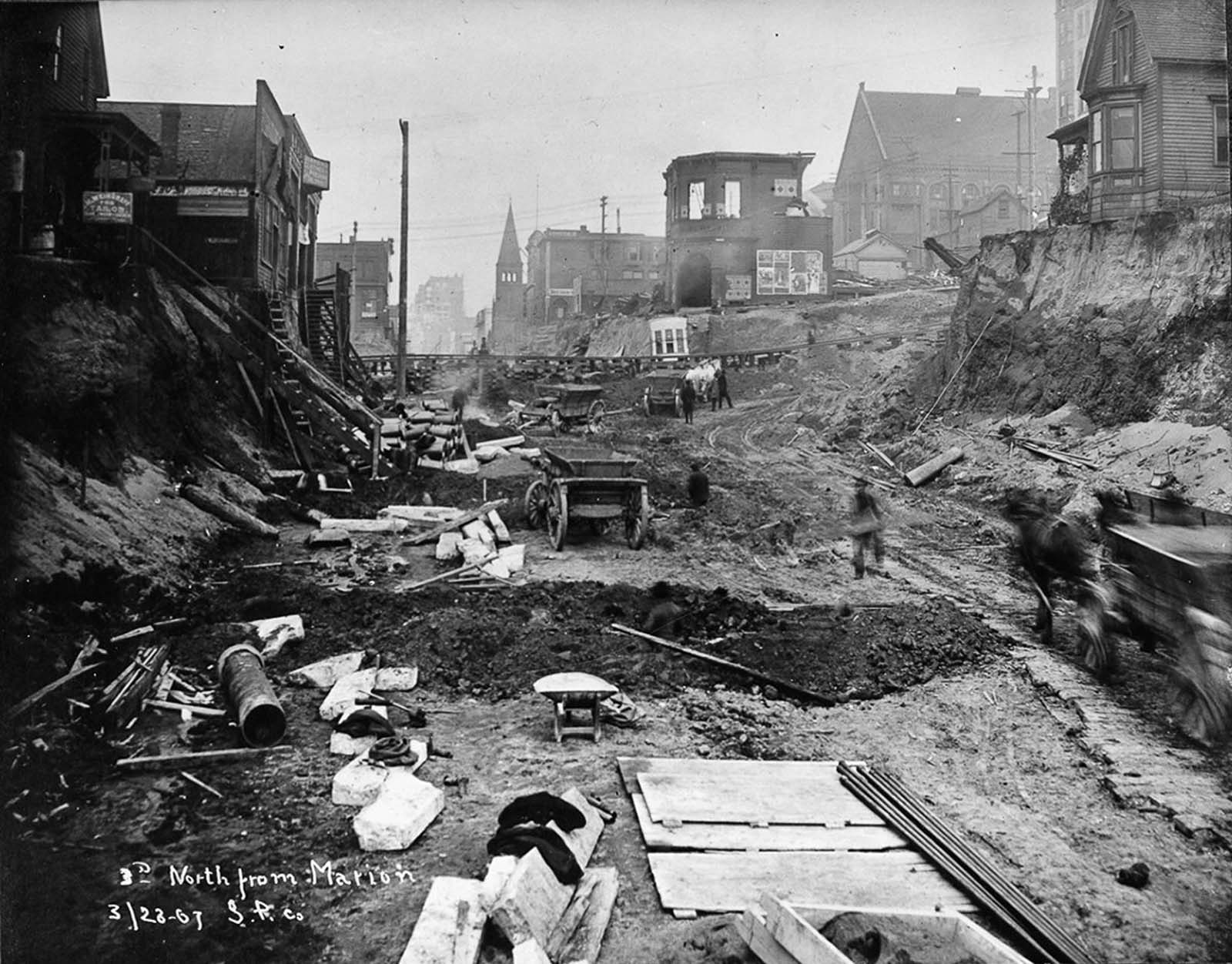Between 1897 and 1930, Seattle’s hilly terrain underwent radical regrading, perhaps the most significant alteration of urban terrain at the time. Regrading was adopted mainly for economic reasons. By reshaping the land, more commerce could flow into the city. Initially, city planners believed that business would thrive if the streets were at regular angles and at a level elevation. The city of Seattle was built by moving mountains, straightening rivers, leveling hillsides, digging sewers, paving roads, and carving canals. In his 1916 History of Seattle, Clarence Bagley wrote that “no great city on the American continent has overcome so many natural obstacles in its expansion.” Bagley concluded that Seattle was a “vast reclamation project.”
Seattle’s downtown retail district was devastated by fire in 1889, leading to these regrading projects. In the wake of the blaze, City Engineer R. H. Thomson developed an ambitious plan to revitalize the city. After he was convinced, the city leveled hills, filled tidelands, straightened the Duwamish River, and purchased the Cedar River watershed. Seattle matched Bagley’s description of a city under constant Construction from 1890 to 1930, when most of these projects were completed.
Seattle completed several regarding projects, but one of the most notable was the Denny Regrade, completed in two phases. During the first Dennis Regrade (1908–1911), about 27 city blocks were removed from Pine Street to Cedar Street and Second to Fifth Avenues. Approximately 20,000,000 US gallons (75,708 m3) of water was pumped daily from Lake Union, aimed at the hill, and then run through tunnels to Elliott Bay.
A significant motivation for the regrade had been to increase land values. Still, the stretch of land opened up – the heart of today’s Belltown – was cut off from the rest of the city by the remaining eastern half of the hill, whose western face provided no access. On the other hand, property owners and investors hesitated to build on the remaining hill because they feared that their buildings would eventually be destroyed during the next phase of the regrading process. This resulted in Denny Regrade No. 2, which lasted 22 months and was begun in February 1929. With power shovels rather than sluicing, the earth was transported to the waterfront by conveyor belts, loaded onto specially designed scows, and dumped in deep water. Intentionally, the scows were designed to capsize. They were symmetrical from top to bottom and side to side, and a seacock could be opened to fill one side with water. It would capsize, dump its load, bob up, empty the tank, and right itself in three minutes. The Denny School on Battery Street between 5th and 6th Avenues was demolished as Denny Regrade No. 2. When it opened in 1884, it had been described as “an architectural jewel…the finest schoolhouse on the West Coast”.



























